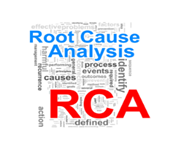Corrective Action Preventive Action (CAPA) Best Practices

What is a CAPA (Corrective Action/Preventive Action) and why?
A CAPA is a comprehensive investigation generated to address a systemic quality incident and is mandatory in resolving/preventing the issue from recurring. In order to have an adequate CAPA process, the approach must be vigorous, effective, and beneficial in addressing any critical non-compliance that may have occurred. A CAPA, if not addressed properly, can be a thorn in the side of your establishment and can be the cause of a 483 if not addressed appropriately and effectively in a timely manner.
Situations may arise throughout the conduct of a clinical trial at any time and quick escalation to a CAPA is imperative for all incidents of a critical nature, to address and cut short any recurrence. A CAPA holds a stigma within the industry of being a black mark on your process , but if turned around and addressed effectively and completely, it can be an opportunity for continuous improvement.
Advantages of Integrating CAPA Process
An effective quality system is extremely important in creating a strong foundation and for the overall success of a CRO. One of the most important elements in a company’s continuous improvement is a solid CAPA process. A good CAPA management process provides effective problem resolution management, allowing for problem identification and quick CAPA initiation (not months after the incident occurred).
As per the FDA, “The purpose of the corrective and preventive action subsystem is to collect information, analyze information, identify and investigate quality problems and to take appropriate and effective corrective and preventive action to prevent recurrence”.
12 basic phases of a CAPA process
There are 12 basic phases of a CAPA process that are critical to its success and are engrained within BioPharma Services’ internal procedure. The list is sequential as per below:
- Problem Identification – what incident occurred and when
- Detailed Description of the Non-Conformance Incident – date/frequency if applicable
- Thorough Investigation, including sequence of events and who you spoke to
- Root Cause Analysis – what caused this incident to happen?
- Risk Assessment – determine the risk level based on the severity and probability of the incident (High/Medium/Low)
- Corrective Action – activities implemented to contain the incident
- Preventive Action – activities implemented to prevent further occurrences of the incident
- Management Review – senior-level management review of the details of the CAPA
- Medical Director Review – review by Medical Director if determined that subject safety is impacted
- QA Approval – thorough review/approval by QA Management
- Effectiveness Review (conducted by QA at a predetermined timeframe e.g., 6 months, to ensure the preventive action was effective, no recurrences
- Closure – only after the effectiveness review determined that preventive action was effective can the CAPA be officially closed
CAPA and other training tools: When should CAPA be used?
Although there are many training tools such as standard operating procedure (SOP) reading, hands-on training and all the regulatory guidance that are available to the industry, due to the fast-paced nature of the clinical research company, it is always possible to encounter safety and unanticipated issues during a clinical trial.
If there are critical errors to the extent that they impact the integrity of a clinical trial, a CAPA must be generated. If there is an issue that is not necessarily critical yet is a recurring issue, then a CAPA should be prepared. One must have a comprehensive CAPA program that includes implementation of corrective actions and preventive actions in a timely manner that addresses and prevents further occurrences of the same critical error.

The Importance of Root Cause Analysis
At a very basic level, root cause analysis (RCA) is extremely important in discovering the true cause of the incident, and the underlying reason why the incident occurred in the first place. Correcting the immediate cause of the incident may erase the symptom of the problem, but not the problem itself. A good RCA identifies the error accurately in order to quickly “fix what is broken” and identify what went wrong and why.
One question to ask yourself is, is the RCA conducive to determining the complete root cause. It is extremely important to consider all possible reasons why an incident may have occurred, using all the “what, why and how” questions, there may be more than one root cause identified as a result. If you do not get to the core of the issue and discover what caused the issue to occur in the first place, your CAPA program is not effective. It is very true that the root cause analysis is only as good as the info you collect.
The 5 Why’s and Fishbone cause-effect diagram are two good techniques for determining the specific reason that caused the problem, keeping in mind that there may be more than one root cause that caused the incident. Some factors that may be found during the root cause analysis are equipment, personnel training, procedures, and resource availability to name a few.
Difference Between Corrective and Preventative Actions:
| Basis of Comparison | Corrective Action | Preventive Action |
| Point of Use | After incident occurs | Before incident occurs |
| Nature | Reactive | Proactive |
Definition of Corrective Action
Action to eliminate the cause of nonconformity and to prevent a recurrence.
Definition of Preventive Action
Action to eliminate the cause of a potential nonconformity or other potential undesirable situation.
The difference between a Corrective Action and a Preventive Action is that a corrective action is an immediate action taken to fix an issue identified, and a Preventive Action is an action taken to resolve the root cause of the issue and prevent any further recurrences. If you are new to the CAPA process, you may have difficulty distinguishing between what is a corrective action and what is a preventive action. I have seen this happen many times and had to return CAPAs for correction due to the misunderstanding. The key to understanding the difference is to ask yourself, will this action prevent it from recurring, or will it simply correct the issue here and now.
One example may be a piece of equipment that has the wrong due date for calibration on the label in error. Corrective action could be to obtain a new label with the accurate details and replace it immediately on the equipment. Preventive action could be to conduct retraining and to have the equipment reviewed quarterly to confirm all expiration dates meet SOP requirements. Prevention is the key to maintaining an effective quality system.
Some preventive actions that one may implement to avoid recurrences:
- QA in progress routine audits
- Regular inspections of equipment to ensure calibration is adequate
- Comprehensive training is a key to communicating proper procedures
The Importance of Management Oversight and Effectiveness Review
Management review of a CAPA must be implemented to ensure an effective CAPA process prior to QA Approval. The purpose of the management review is to ensure that the non-conformance(s) is (are) adequately described, and thoroughly investigated, the impact is assessed accurately and the proposed CAPA actions (corrective/preventive) are adequate to prevent recurrences and improve the process overall. Effective management oversight of a CAPA plan should include a review of the CAPA by management and sign-off on the process prior to submitting to QA.
Oversight by the Medical Director (as determined by QA) is also very important to ensure that subject safety, if applicable, is addressed and resolved effectively. An effectiveness review must be conducted after a certain period of time (e.g., 6 months) to confirm if the processes and procedures put in place to address the non-conformance were indeed effective. The effectiveness review is completed by the QA Dept and only if deemed successful, without any recurrences during the monitoring time-period, can the CAPA be closed.

As per ICH guideline Q10 on the pharmaceutical quality system, “Innovation, continual improvement, the outputs of process performance and product quality monitoring and CAPA drive change.” Management of an effective CAPA process is critical to the success of a company, and good communication throughout the organization is key to ensuring that information is conveyed to all those who are or may be impacted by a CAPA.
Find out why BioPharma might be the right partner for you! Learn more about BioPharma Services and the wide array of bioanalytical services we provide.
BioPharma Services, Inc., a Think Research Corporation and clinical trial services company, is a full-service Contract Clinical Research Organization (CRO) based in Toronto, Canada, specializing in Phase 1 clinical trials 1/2a and Bioequivalence clinical trials for international pharmaceutical companies worldwide. BioPharma has clinical facilities both in the USA and Canada with access to healthy volunteers and special populations.



